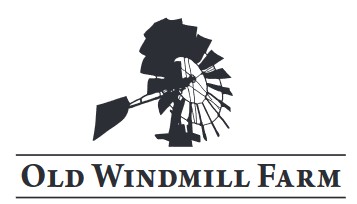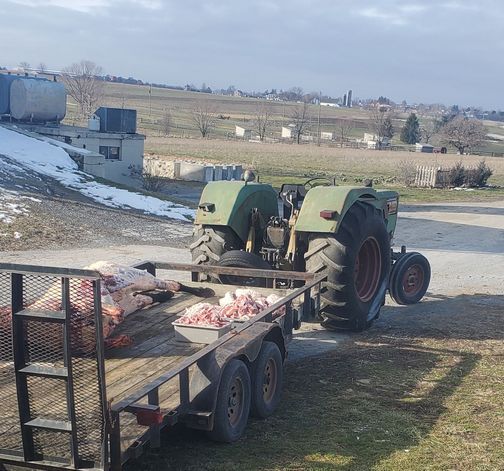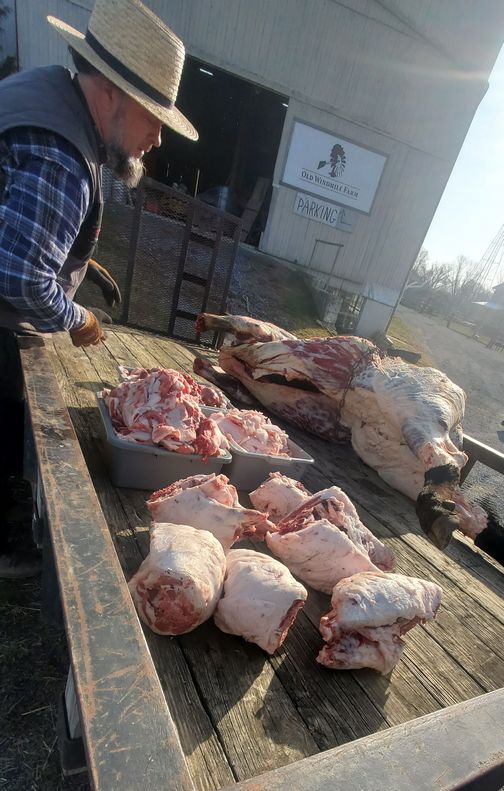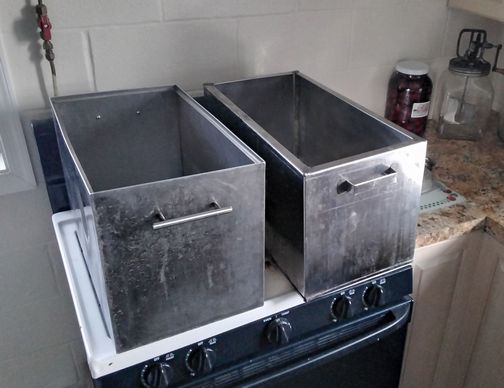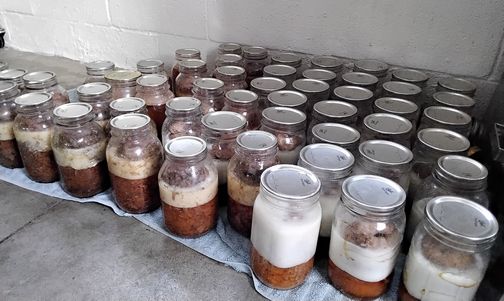This blog features happenings on the Old Windmill Farm in Lancaster County, PA and a glimpse into the Amish way of life.
A new message is posted about every 2-3 weeks (depending on our busyness sometimes more frequently)
Sign up to receive these message each time they post
Saturday, March 16, 2024
Old Windmill Farm beef and pork ready for processing
“Butchering On The Farm”
“Winter time beef and pork preserving”
Wintertime is a less busy time for most Amish farmers. There is no planting or harvesting. But it’s always a busy time for the local butcher shops providing processing of mainly beef and pork for customers that have a beef on pasture with the rest of the herd or a hog that is raised for providing bacon, ham and sausages for the family.
Beef is usually 2 years old and finished with grain for the last 6 weeks for marbling of the meat. Hogs are around 1 year old. My grandparents did their own processing, smoked and salted the hams and other meat in the smoke house using maple or cherry wood to preserve it.
The hams are hung it in the attic in the cold for the winter. When the haus frau (Amish housewife) needs ham, bacon, bologna, or sausage she would send one of the children to the attic to get the meat she needs. The meat would keep till April or May to use with the fresh potatoes or green beans.
Myself, Haus dawdy, (Amish husband) and our second son did a large beef and a few small pigs here in February. The beef and pigs were born on the farm and taken care of by the family. Taking care of the veterinary needs includes castrating when young and worming periodically.
The pigs are good to have on the farm to feed less than perfect corn or other feed. Also, pigs favorite food is milk. Our pigs get skim milk that is left after taking off the cream for making butter. The pigs also get fed whole corn.
Horses and cows are very vulnerable to getting botulism when fed moldy feed or corn.
A question farm guests often ask us is do we get attached to the animals? We do in a sense but if you are a farmer you realize one of the reasons animals are taken care of well is because they are a part of the food chain. You always have a grateful feeling towards the Lord when you preserve your own meat because it blesses and provides for the family.
The beef weighed around 1,400 pounds (live weight). We used the skid steer to maneuver and hang up for aging. Left to age for 10 days in the cold temps in the tobacco barn. Also the hogs were left in the tobacco barn to age. We removed the hides and the entrails to prepare the meat for aging.
One of the daughters and I (haus dawdy) deboned the meat from the hogs and put it in containers for the butcher. We put the hams aside for smoking and processing. The lard is rendered and used for baking and cooking as well as waterproofing for leather boots. Lard is hog fat. Tallow is beef fat. Tallow was traditionally used for making candles.
The hogs were too small to get bacon from but fresh sausage, scrapple and smoked ham steaks will be made.
The beef will provide steaks, dried beef, chipped steak, kielbasa, sweet bologna, ground beef, burger patties and a small amount of beef jerky as a treat. Ground beef will be made into meat balls and preserved in mason jars, as well as ground beef and sausage preserved and stored in the can cellar for special dishes or breakfast. The mason jars are stored in the can cellar in the cool temperature below 70 degrees. Otherwise the jars will get too warm and lose the seal, therefore the contents will spoil.
Our daughter (Naomi) and I picked up the meat in 2 buggies. We left the farm at 6:30 AM for the butcher shop which is around 2.5 miles from here.
After the butcher was finished my wife and daughter canned (in mason jars) 160 quarts of meat. For the rope sausage, it gets curled into jar. Ground beef and loose sausage is pressed firmly into the jar with 1 teaspoon of fine ground rock salt on top. Each jar has a lid and ring to seal it. Jars are then placed in the square metal canners with cold water up to neck of jar. If contents are cold, cold water is put in the canner. If contents are hot, hot water is put in the canner. Otherwise the jars break.
For meat, the water needs to boil for 3 hours till it is done and then the jars are taken out of the canner. As the jars cool down, the vacuum seals the jars making a pinging sound as lids are sealed. The hausfrau (wife) checks the jars to make sure they are sealed. The ones not sealed need to be put through the process again. As seen in the photo, the white in the jars is the fat or lard that is cooked out of the meat as it is heated in the canning process. In our circles we call lard (fat) and it is stored in the cellar. As the joke goes: “the haus frau went down to the cellar to get fat”.
Steaks and roasts are put in the freezer. Sweet bologna, hams and dried beef need to be salted and smoked at the butcher shop. The butcher uses cherry or maple wood to smoke it. Smoking and salting gives flavor and it also preserves the meat.
As a farmer in the dairy business we did not often have opportunity to have young beef because we always seemed to have a cow in misfortune. Once we had a cow struck by lightning and killed in the barn while we were doing milking. The cow was 15 feet away from me. Gave me lots of respect and Godly fear for the Creator. We had lots of ground beef, bologna, chipped steak and dried beef from that cow. Steaks tend to not be tender from older cows. More than once, we had a steer on the pasture for our own beef but ended up sending to the auction block for much needed cash to pay bills.
Seeds have been planted in the garden. Robins and song sparrows are serenading in the morning before the sun is up. Spring is right around the corner!
God’s blessings and best wishes from our family to yours.
The Lapps
Examining the beef and pork on the wagon prior to the trip to the butcher shop.
The jars are placed in the large canners to boil over the stove.
Canned meat in the pantry ready to eat.
The white on the top is the fat or lard.
Farm news: As spring approaches we are open for limited tours which must be reserved. We will be opening back up with a regular schedule in several weeks. Today (March 16) we expect a very busy day due to the nice weather!
Jesse Lapp
262 Paradise Ln
Ronks, PA 17572
US
717-687-7929
Old Windmill Farm
https://www.oldwindmillfarm.com
